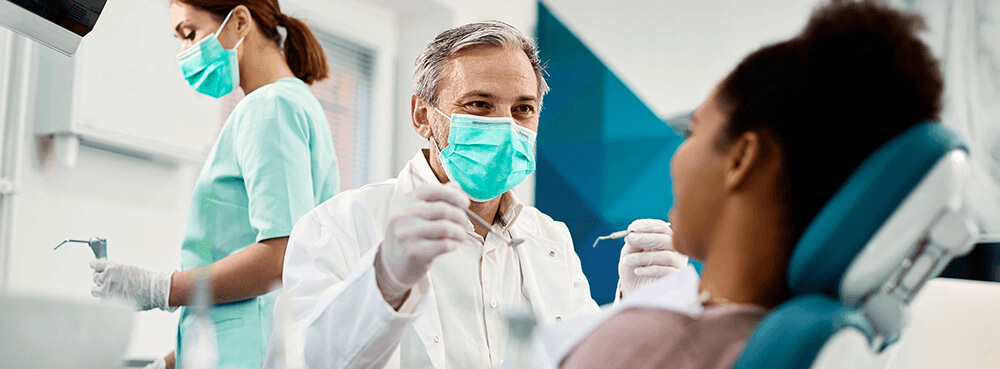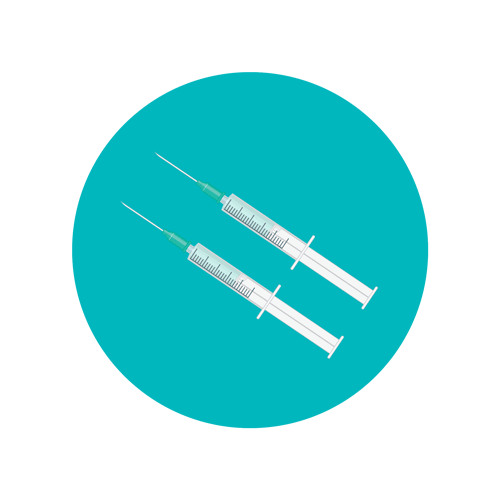How to Dispose of Dental Waste

Every healthcare provider in the UK is required to follow guidelines, recommendations, and laws associated with medical waste management. That includes dental practices. It’s just as important for the dental practice to know and understand healthcare waste definitions and classifications as it is for a hospital. Waste minimisation, colour-coding and storage limitations are also an important part of medical waste management for dental practices.
Recommendations may differ slightly among community health care providers or pharmacies, general practices, health centres, and dental practices. However, you should know your responsibilities as a dental practice when it comes to waste segregation, packaging, classification, and labelling.
A resources like the Department of Health’s Environment and Sustainability Health Technical Memorandum (07-01: Safe Management of Healthcare Waste) is a good place to start.
TOPICS WE WILL COVER:
6 / Sharpsmart for Dental Practices
Duty of Care
As in other medical scenarios, a dental practice has a duty of care to monitor and assess the type of waste produced at a dental facility and how it is disposed of. It is vital that such practitioners take all ‘reasonable’ measures to make sure that waste is dealt with properly from its point of origin to its ultimate disposal.
Note: The responsibility of the dental practice does not end at the moment that the waste is collected and transported off-site. It is within the duty of care for the dental practice to ensure that items are packaged correctly for transport, documentation is properly filled out, and the transfer of waste is only granted to an authorised person for transportation to an authorised waste site.
Every dental service provider, from independent practices to dental groups or corporations must also apply due diligence when it comes to training and waste management procedures for all employees from management to housekeeping or caretaker providers.
Identification of Wastes in Dental Settings
While many dental practice employees and their patients may not associate hazardous materials with a dentist’s office, a number of hazardous wastes are collected at dental provider facilities. These can include but are not limited to:
- Sharps

- Amalgam wastes
- Photochemical and other X-ray waste
- Bagged clinical waste
- Chemical disinfectants
In a dental facility, every employee must be able to classify and segregate wastes appropriately. All employees should know that any potential medicine or contamination of a sharp will determine its options for disposal, such as those that have been used for local anesthetics. Yellow-lidded sharps containers must be used in such scenarios. Orange bags are to be used for soft infectious clinical waste which is deemed suitable for alternative treatment processes such as autoclaving. Dental amalgam or amalgam-contaminated wastes must not be placed in orange bags. That said, dental practices should have amalgam separators installed, and they must be ISO standard approved and outfitted to capture any amalgam contained in wastewater.
Employees should also be able to identify non-hazardous offensive waste streams which may typically involve soft wastes from a dental practice. Such waste can include but is not limited to:
- Swabs contaminated with saliva (where no known risk of infection is present)
- Gowns and gloves and other personal protective equipment (PPE) that has not been contaminated with medicines, chemicals, blood, or amalgam
What about teeth? In a dental setting, teeth are deemed a non-anatomical infectious waste. Teeth that do not contain amalgam and spicules (pieces of bone which may be left behind after tooth extraction) can be placed in a yellow sharps receptacle. However, it’s the responsiblity of the dental provider to make sure that all waste is treated appropriately. Teeth containing amalgam should be segregated from other waste.
Note: As of 2018, the Chief Dental Officer for England proposed new requirements for all dental practitioners in the country to restrict the use of dental amalgam in certain individuals including children under 15 years of age and pregnant women. Read more in the publication of the Department of Health and Social Care (National plan to phase down use of dental amalgam in England).
Another non-infectious type of dental waste is found in dental plasters made of gypsum. Such waste is not to be disposed of in standard landfills. Dental plasters containing gypsum should be disposed of in an orange bag and separated into additional and appropriate containers either to be recycled as gypsum or for disposal in a special-purpose landfill.
Labelling Guidelines
As in every other medical scenario, appropriate and compliant labelling of all wastes from a dental facility are required. Medical waste containers must be individually and clearly identified to note the nature of the waste (include appropriate classification codes when possible) as well as contact and business information for the dental practice.
When orange bags are used, a strong identification tag is to be placed around the neck of the bag.
It is also the legal responsibility of the dental practice to ensure that accurate and complete documentation accompany such waste, including consignment notes (for hazardous wastes) as well as waste transfer notes (for non-hazardous waste).
Storage Guidelines
According to the Health Technical Memorandum, a dental practice can store its own waste at the premises without requirements of an environmental permit, if specific conditions are met:
- The waste must be stored in a secure area
- The waste must not be stored for a period longer than 12 months
That said, dental practices are required to maintain complete and accurate records regarding all hazardous waste generated at the site. It is recommended that documentation be kept on-site for a minimum of three years from the date the waste was removed. Waste transfer notes should be kept for a minimum of two years.
Practice Makes Perfect
Ensure compliance by performing routine duty of care and waste audit checks. Such monitoring enables a dental practice to more accurately define and classify its typical waste and aids the completion of waste documentation. Some waste disposal companies require a waste audit from a dental practice before acceptance of waste to ensure compliance. This also ensures that the dental practice is correctly assessing and monitoring their waste practices and is also able to identify problems and fix them prior to dental waste disposal.
Waste audits in dental practices typically focus on sharps, dental amalgam (excess amalgam, separator contents, teeth with fillings, and so forth), and any materials that may be contaminated by bodily fluids that may be deemed infectious such as swabs and PPE. Waste audits also ensure that appropriate colour-coded waste receptacles are used and placed according to guidelines.
Dental practices have a duty of care to properly identify, collect, store, and dispose of dental waste. Training procedures, waste collection documentation, and compliant transport documentation is essential to reduce the risk of fines and penalties for non-compliance.
Sharpsmart for Dental Practices
Sharpsmart encourages dental practitioners and dental facilities to routinely review regulations in regard to dental waste disposal. Doing so ensures compliance, reduces the risk of fines and penalties, and most importantly, protects employees, patients, and keeps the environment safe. For more information on Sharpsmart products and resources, call us today.
Let's Talk!
Your time is valuable, and we don’t want to play hard to get. You can either phone us directly on the details listed on our contact page, or feel free to fill out this short form and one of our team members will get back to you as quickly as possible.
